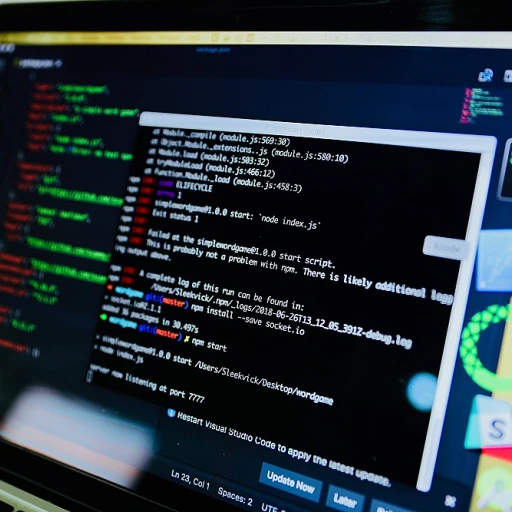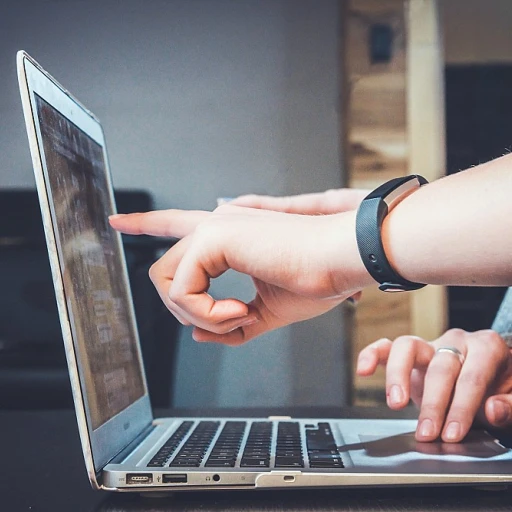
The fundamentals of serverless computing
Demystifying the serverless model
Serverless computing has been a buzzword for a while now, but what does it really mean? We're not talking about computers without servers; rather, we're diving into a paradigm where developers can run code without managing server infrastructure. Think of it as a way to offload server management to cloud providers, like Amazon Web Services (AWS), Google Cloud, or Microsoft Azure.
Let's talk technical. In this model, developers write functions, also known as FaaS (Function as a Service), that execute in response to events. Once written, these functions are uploaded to a cloud provider. The provider takes care of provisioning, scaling, and managing the servers needed to execute these functions. It's as if the server-side worries disappear, letting you focus on code quality and functionality. Just like magic, but better – it's real.
An interesting aspect is how billing changes. Traditional models bill based on server uptime, regardless of actual workload. But with serverless, you only pay for the compute time you use. That's right, idle time doesn't cost you a penny. AWS Lambda, one of the popular serverless offerings, charges based on the number of requests and execution duration – it's like paying only for what you eat at a buffet.
Serverless computing aims to tackle several pain points in software development. For one, it reduces operational overhead. No more patching, updating, or scaling servers. Imagine a world where you don't have to wake up at 2 AM because your server crashed after a traffic spike. Sounds like a dream, right? Well, many developers are already living it.
To understand the importance of serverless computing, you should see how it fits into the whole software development lifecycle. It’s tightly knit with CI/CD (Continuous Integration and Continuous Deployment) pipelines, enabling rapid deployment cycles with minimal downtime. In our exploration of serverless adoption, we'd see how startups and enterprises alike utilize it to keep pace with evolving business needs.
Adoption trends and statistics
Current trends in the uptake of serverless computing
Serverless computing has seen a significant rise in popularity in recent years. According to a Datadog report, over 50% of their users have adopted serverless architecture as of 2021. This clearly indicates a growing shift towards serverless solutions in the tech community.
Another intriguing data point comes from a Flexera State of the Cloud report, which highlights that 61% of enterprises are already using or planning to use serverless technology. This showcases the ongoing commitment from larger organizations to integrate serverless solutions in their operations.
Experts like Forrest Brazeal, Cloud Educator at A Cloud Guru, emphasizes the enormous potential of serverless computing. He mentions, "Serverless technologies empower developers to focus on writing code rather than managing infrastructure, which boosts productivity and innovation."
In terms of market trends, the serverless computing market, valued at $7.6 billion in 2020, is projected to hit $19.8 billion by 2025, according to MarketsandMarkets research. This exponential growth underscores the increasing trust and dependence businesses are placing on this technology.
These trends show that serverless computing isn't just a passing fad but a vital component of modern software development. The upward trajectory in adoption rates indicates that organizations, regardless of size, are recognizing its advantages in terms of scalability, cost-efficiency, and innovation capabilities.
Real-world adoption: who's leading the pack
Among the early adopters of serverless computing, tech giants like Netflix, Coca-Cola, and Airbnb have implemented it to streamline and optimize their operations. For instance, Coca-Cola uses AWS Lambda to manage its Freestyle vending machines efficiently.
Netflix, a renowned name in the world of entertainment streaming, leverages its serverless architecture to handle millions of requests every day, ensuring smooth and unbroken service to its global audience. They primarily rely on functions-as-a-service (FaaS) to scale operations without the burden of managing physical servers.
These use cases highlight how scalable and efficient serverless computing can be, paving the way for more companies to follow in their footsteps and transform their developmental processes.
Top benefits of serverless computing
Cost efficiency and scalability
Serverless computing is a game changer when it comes to saving money and scaling up. According to a report from Amazon Web Services, companies can reduce costs by up to 70% by adopting serverless architectures. This is because you only pay for the compute time you actually use, rather than maintaining idle servers.
An example comes from Dropbox which reportedly saved millions by switching to a serverless infrastructure. Their workloads could scale automatically to handle peak usage periods, without incurring extra costs during lulls. This elasticity is particularly valuable for start-ups and seasonal businesses.
Streamlined operations and development
Development teams love serverless computing because it simplifies operations. Instead of managing servers, they can focus on writing code. The deployment process is faster, allowing for rapid iteration and innovation. According to Google Cloud, serverless platforms can reduce the operational burden on developers by 50%, freeing them up to focus on coding rather than infrastructure management.
A case in point is Coca-Cola, which used serverless functions to create their loyalty program. This reduced their time-to-market significantly and allowed their engineers to concentrate on delivering features that added value to their customers, rather than dealing with server maintenance.
Improved productivity and innovation
By eliminating the need to manage infrastructure, serverless computing boosts productivity and encourages innovation. A IBM study shows that development teams using serverless can release new features 20% faster than those using traditional server-based environments.
For instance, Netflix embraces serverless to handle microservices that support their vast range of features. This approach has allowed them to roll out updates quickly and efficiently, keeping users happy and engaged with a constant stream of new content and functionalities.
Environmental sustainability
Going serverless isn't just good for business—it's good for the planet too. Since resources are used more efficiently, there is less energy waste. A study by Accenture revealed that cloud computing can reduce energy consumption by up to 65%, and serverless architectures contribute significantly to this reduction.
Take the example of Accenture itself, which implemented serverless solutions to lower its carbon footprint while maintaining operational efficiency. This not only speaks to responsible business practices but also resonates with consumers who prioritize sustainability.
Challenges and criticisms
Potential drawbacks and criticisms
While serverless computing promises significant advantages, it hasn't been universally applauded. Some developers and industry experts have voiced concerns that are hard to ignore. For example, the cold start issue is a common criticism. Cold starts occur when functions need to be initialized from scratch, causing latency and potentially slowing down response times. This can be particularly troublesome for applications requiring sub-second performance.
A 2022 report by the Cloud Native Computing Foundation highlighted that 28% of surveyed developers identified cold starts as a significant pain point (CNCF Report). This issue varies across providers; for instance, while AWS Lambda has made strides in reducing cold start times, it's still an area of concern for other platforms.
Cost management complexities
Another criticism focuses on cost management. On the surface, serverless seems cost-effective, but the pay-per-invocation model can lead to unpredictable expenses. When traffic surges, so do the costs, making budget forecasting a challenge. According to a study by 451 Research, 31% of companies have struggled to predict their serverless costs accurately (451 Research Report).
Vendor lock-in and limited control
Vendor lock-in is another point of contention. Each cloud provider has its own APIs and interfaces, making it difficult to switch vendors without significant re-engineering. Experts like Kelsey Hightower, a prominent advocate for open-source technologies, warn about the risks of being tied to a single provider. His insights, shared during the KubeCon 2021 conference, emphasized the importance of considering long-term flexibility and potential migration complexities.
Debugging and monitoring challenges
Debugging and monitoring in serverless environments are also more complex compared to traditional setups. When dealing with multiple functions that run independently, tracking down the root cause of performance issues becomes a bit like finding a needle in a haystack. The State of Serverless Report by Datadog pointed out that 24% of developers find debugging serverless functions a major headache (Datadog Report).
Finally, serverless computing often implies limited control over the runtime environment. This can be restrictive for applications requiring custom configurations or specialized hardware, making it less suitable for certain types of workloads.
In summary, while serverless computing opens new avenues for efficiency and scalability, it also brings its own set of challenges. Developers need to weigh these aspects carefully when considering a serverless approach.
Case studies: Successful serverless implementations
Real-world implementations showcasing serverless success
Serverless computing has transitioned from a buzzword to a backbone for several tech giants and startups alike. Let's explore some standout examples that highlight the transformative impact of serverless architectures.
Netflix: scaling with unbreakable performance
When it comes to providing a seamless viewing experience across millions of devices globally, Netflix needed an architecture that could handle an unpredictable load. Enter AWS Lambda. By leveraging serverless functions, Netflix achieved efficient scaling and unparalleled performance. According to Adrian Cockcroft, the former VP of Cloud Architecture at Netflix, the serverless approach allowed the company to process billions of traffic logs daily without the overhead of managing infrastructure. (source)
Airbnb: rapid deployments made easy
Airbnb, the global lodging platform, found itself at a crossroads when trying to speed up feature deployments. Moving to a serverless model was the answer. Using a combination of AWS Lambda and API Gateway, Airbnb streamlined its backend processes, allowing engineers to deploy new updates swiftly. This shift not only improved the agility of their teams but also cut down operational costs. Nathan Blecharczyk, Co-founder and CSO of Airbnb, emphasized how serverless helped them maintain a robust and flexible infrastructure in a rapidly growing environment. (source)
Codepen: cost-effective computing without the fuss
CodePen, a popular social development environment for front-end designers and developers, turned to serverless computing to tackle cost management issues. By implementing AWS Lambda, CodePen was able to significantly reduce its operational costs while maintaining a high level of service reliability. Chris Coyier, Co-founder of CodePen, spoke about the benefits: "Moving to serverless allowed us to avoid worrying about scaling our servers and focus more on developing features for our users." (source)
Telenor: enhancing telecom services with agility
Telenor, a major telecom operator, leveraged serverless technology to develop a new real-time data processing solution. By deploying with AWS Lambda, Telenor was able to process large volumes of network data in real time, leading to improved customer service and operational efficiency. According to a study by ACG Research, Telenor's serverless adoption resulted in a 40% reduction in operational costs. (source)
Ikea: reinventing retail through serverless
The Swedish retail giant IKEA adopted serverless computing to modernize its online shopping experience. With AWS Lambda, IKEA developed and deployed microservices that improved the site's performance and scalability. The system handles everything from customer orders to inventory management seamlessly. IKEA's CTO, Göran Nilsson, noted that moving to serverless provided them with a competitive edge in the eCommerce sector by allowing rapid innovation without the need for infrastructure upkeep. (source)
Security considerations in serverless environments
Mitigating risks in a serverless world
When you think of serverless computing, security might not be the first thing that comes to mind. But trust me, it’s huge. According to a survey by Statista, over 70% of organizations express concerns about the security risks tied to cloud computing, including serverless architectures.
Serverless doesn’t mean carefree. You’re still on the hook for application-level security and data privacy. Remember that while serverless providers handle the infrastructure, you control your code. And sometimes, bad code means big headaches.
Best practices for robust serverless security
Keeping your serverless environment secure involves several practices:
- Configuration is king: Misconfigured permissions are a common pitfall. Only give your functions the permissions they actually need. The 2020 AWS report spotlighted how damaging these missteps can be.
- Keep secrets secret: Use services like AWS Secrets Manager to store API keys and other sensitive data. Avoid hardcoding them into your functions.
- Regular updates: Apply security patches and updates ASAP. Delays can expose you to vulnerabilities and exploits.
- Monitoring and logging: Keep an eye on your serverless functions’ performance and logs. Services like AWS CloudWatch can alert you about suspicious activities or performance anomalies.
Incorporating these practices can mitigate the most common risks associated with serverless computing.
Case study: how slack secures serverless
Take Slack, for example. They leverage AWS Lambda extensively for real-time event processing. A white paper published by AWS in 2021 detailed how Slack secures its serverless operations. By implementing strict IAM roles, encrypting data in transit and at rest, and continuous monitoring, Slack ensures its functions are both efficient and protected.
Ongoing debates and controversies
No tech solution is without its critics, and serverless security is no exception. One significant debate revolves around the lack of control. Some experts argue that serverless abstracts away too much, leaving developers with little visibility into what's happening behind the scenes. This issue was highlighted in a 2022 paper by cybersecurity research group Cybereason. They pointed out that the opaqueness could mask potential security flaws.
In short, while serverless computing simplifies many aspects of software development, security is an area that requires ongoing attention and diligence.
The role of serverless in the future of software development
Why serverless is the future of software development
The software development scene is always changing, and one of the most exciting trends today is serverless computing. According to Gartner, by 2025, more than 50% of global enterprises will have deployed serverless functions.
Riding the wave of automation
Serverless architecture takes automation to the next level. It allows developers to focus more on writing code and less on managing infrastructure. For instance, developers at Coca-Cola used serverless tech to streamline operations and reduce workload, saving them countless hours.
Cost efficiency and scalability
With serverless, you pay only for what you use. Amazon Web Services reports that customers typically save 70% compared to traditional computing models. Also, companies like Netflix have successfully scaled their operations using serverless without the headache of maintaining servers.
Environmental impact
An often-overlooked benefit is the environmental angle. Serverless systems optimize resource use, reducing carbon footprints. An Accenture study found that a shift to cloud and serverless tech cuts operational emissions by up to 84%. This could be a game-changer in corporate sustainability efforts.
Redefining developer roles
As the need for server management decreases, developers can now focus on innovation. Microsoft’s Jeff Hollan notes that serverless is transforming the software development lifecycle, allowing for rapid prototyping and quicker deployments.
Boosting startup culture
Startups benefit massively from serverless as it lowers entry barriers. Companies like Auth0 used serverless to scale quickly without the burden of heavy initial infrastructure costs. This capability is driving a surge in tech entrepreneurship.
Ongoing controversies
Despite its perks, serverless isn’t without critique. Some experts argue that vendor lock-in remains a significant risk. Additionally, there are concerns around cold starts. But advances in technology continue to address these issues, making serverless even more attractive.
What experts are saying
Thought leaders like Simon Wardley advocate the adoption of serverless, emphasizing the innovation it brings to the table. Analyst firm Forrester also highlights serverless as one of the top trends in technology for the next decade.
Tools and platforms for serverless computing
Leading tools that developers are raving about
In serverless computing, a variety of platforms and frameworks have emerged, each bringing unique features to help streamline development. AWS Lambda often pops up as a go-to option, with an estimated 70% market share in 2022 [1]. Amazon’s Lambda not only scales automatically but also supports multiple programming languages, making it a versatile choice.
Integrating seamlessly into existing workflows
Another strong contender is Microsoft Azure Functions, notable for its tight integration with other Azure services. Statistics reveal that over 40% of enterprises using Microsoft’s cloud services employ Azure Functions for their serverless needs. Its ease in blending into existing workflows is a key selling point.
Open-source offerings gain traction
Open-source projects like Apache OpenWhisk also deserve mention. Developers love its flexibility and community support, with many organizations preferring open-source solutions for their transparency and control. GitHub shows a growing number of contributions to OpenWhisk, reflecting its increasing popularity.
Going beyond compute with Google's functions
Google Cloud Functions also holds a notable position in the serverless space. Known for its robust event-driven architecture, Google Cloud Functions is tailored to integrate with Google Cloud services seamlessly. According to Google’s 2023 cloud report, the use of Cloud Functions grew by 30% year-over-year.
Frameworks that make life easier
On the framework side, Serverless Framework is hailed for simplifying deployment processes. A survey conducted by Serverless, Inc. reported that more than 50% of serverless developers prefer using this framework due to its extensive plugin ecosystem and ease of use.
Some controversies and criticisms
Although these tools and platforms offer tremendous benefits, some critiques remain. For example, latency issues and cold start times have been a consistent concern with AWS Lambda, as revealed by a 2022 study published on A Cloud Guru. Yet, the ecosystems often provide workarounds or optimizations to handle these hiccups.
In summary, the use of these tools and platforms simplifies serverless computing, making it accessible even to smaller development teams. The growing ecosystem supports a wide range of business cases, driving innovation and efficiency at scale.






